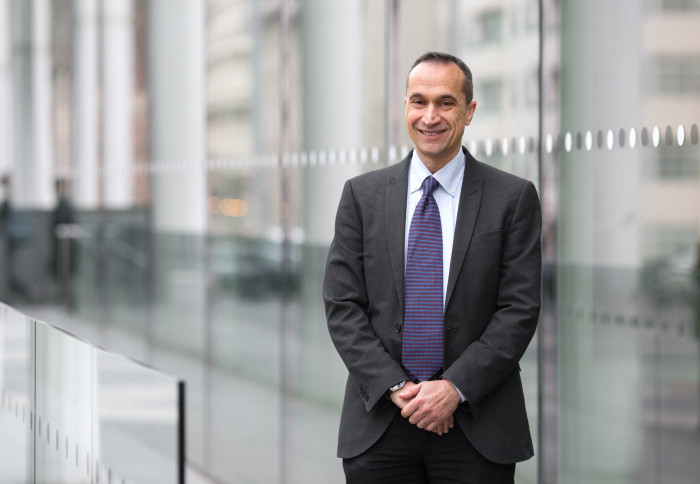COP26: Q&A with leading engineer ahead of Academy ‘Ask the Engineers’ panel

Professor Nilay Shah
Ahead of the Royal Academy of Engineering’s ‘Ask the Engineers’ panel, we spoke to Professor Nilay Shah about COP26’s achievements and next steps.
Nilay Shah is Professor of Process Systems Engineering at Imperial College London’s Department of Chemical Engineering. He is also Deputy Chair of the National Engineering Policy Centre’s Net Zero working group.
 He spoke on a panel on 24 November alongside other leading engineers to answer the question: Has COP26 set the UK on a decisive pathway to net zero?
He spoke on a panel on 24 November alongside other leading engineers to answer the question: Has COP26 set the UK on a decisive pathway to net zero?
In the wake of the UN summit, the Academy’s final Ask the Engineers panel reviewed what has been achieved and whether it has helped to accelerate progress towards a just transition to net zero emissions by 2050.
Caroline Brogan caught up with Professor Shah to find out more.
How do you feel about the wider outcomes of the COP26 summit?
I think in common with many other observers, I would say it achieved less than I had hoped for but more than I had feared. That’s the nature of these events. There were several positive steps and I think the initial commitments by key players will be improved upon during the annual ratcheting process.
Your work focuses on using systems approaches to design, decarbonise, and operate energy and industrial systems.
What do we mean by ‘systems approaches’?
We look at how different elements of energy, industrial, transport and buildings sub-systems are connected. For example, if low-carbon hydrogen is primarily produced to support industrial decarbonisation, a systems approach would consider the opportunities to integrate this with local transport. In other words, low-cost, low-carbon hydrogen made at scale for industrial use can also power local buses and improve local air quality. By considering these interactions, we identify synergies and opportunities for improvements as well as risks and vulnerabilities to hedge against.
Why is this approach important for making the essential policy and industry decisions that will help us to reach net zero?
The ambition of stabilising the climate requires unprecedented change across all sectors of the economy, at pace. It requires us to modify or replace a whole range of technologies and infrastructure. Understanding the interactions between these will be critical. What’s also crucial is understanding how to time interventions so that the change is manageable, effective and resource-efficient. This is where a systems approach, rather than an approach relying on piecemeal projects, is vital.
To what extent has the summit helped accelerate progress towards transitioning to net zero by 2050?
COP26 has identified the important challenges in the engineered and natural world, the changes that will be required, and the types of targets that need to be set. It has set in motion a process by which countries will enhance their ambitions for reducing emissions and will put in place support mechanisms to help other countries with their transitions. However, there is a lot of detailed work still to be done.
Given the scale of the challenge of meeting the emissions targets set at COP26, what should happen to make this work? What critical decisions should we make first?
The summit was good at identifying some urgent short-term actions around stopping deforestation, enhancing natural carbon sinks, rapidly reducing dependence on coal power generation, developing green grids, investing heavily in renewable power generation, rapidly reducing methane emissions and supporting countries most at risk from climate change. These “low-regret” actions (lower-cost actions with relatively large benefits) should proceed at pace while we work on decarbonising industrial systems, transport, buildings and agriculture.
What is the role of the engineering community in achieving the COP26 goals?
It is estimated that the current pledges, known as ‘Nationally Determined Contributions’ (NDCs), will lead to average temperature rises of 2.4°C, which is well above the ‘safer’ limit of 1.5°C. Therefore we need to ensure the ratcheting of commitments over the next few years are ambitious; the role of the engineering community is to demonstrate the feasibility of such ambitions.
At Imperial I am working on integrated energy systems models which can be used to identify cost- and resource-efficient pathways to net zero, as well as on the use of new technologies, feedstocks and fuels for industrial decarbonisation.
-

Professor Shah spoke alongside Dame Joanna da Silva, Director of International Development at Arup, Sinead Obeng, Chair of Energy Institute Young Professionals Council, and Rachel Skinner, President of Institution of Civil Engineers and Executive Director of WSP UK.
The panel was hosted by Alok Jha, Science and Technology Correspondent at The Economist.
Main image: Imperial College London
Inset image: Shutterstock
Article text (excluding photos or graphics) © Imperial College London.
Photos and graphics subject to third party copyright used with permission or © Imperial College London.
Reporter
Caroline Brogan
Communications Division